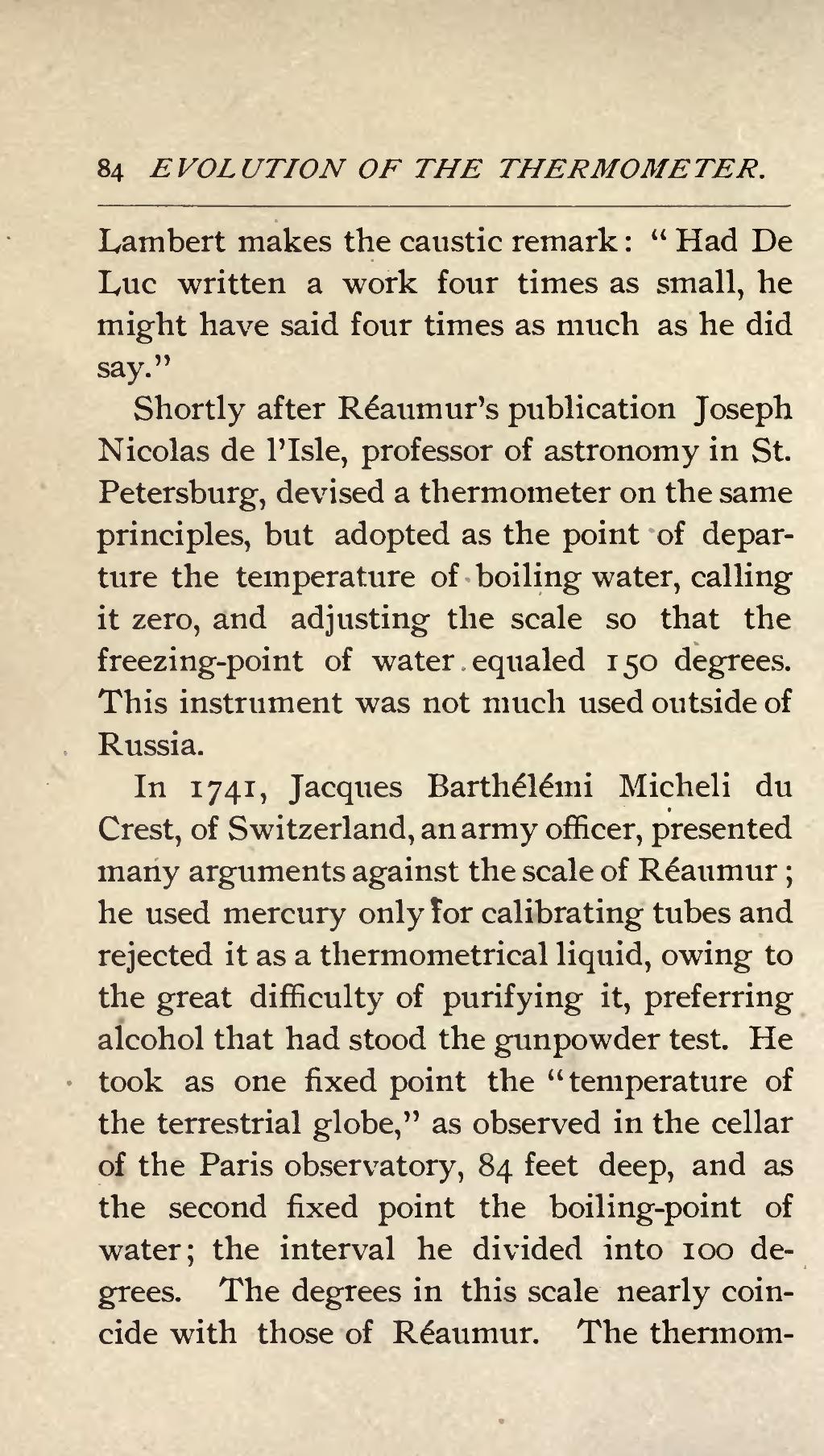Lambert makes the caustic remark: "Had De Luc written a work four times as small, he might have said four times as much as he did say."
Shortly after Réaumur's publication Joseph Nicolas de l'Isle, professor of astronomy in St. Petersburg, devised a thermometer on the same principles, but adopted as the point of departure the temperature of boiling water, calling it zero, and adjusting the scale so that the freezing-point of water equaled 150 degrees. This instrument was not much used outside of Russia.
In 1741, Jacques Barthélémi Micheli du Crest, of Switzerland, an army officer, presented many arguments against the scale of Réaumur; he used mercury only for calibrating tubes and rejected it as a thermometrical liquid, owing to the great difficulty of purifying it, preferring alcohol that had stood the gunpowder test. He took as one fixed point the "temperature of the terrestrial globe," as observed in the cellar of the Paris observatory, 84 feet deep, and as the second fixed point the boiling-point of water; the interval he divided into 100 degrees. The degrees in this scale nearly coincide with those of Réaumur. The thermom-
